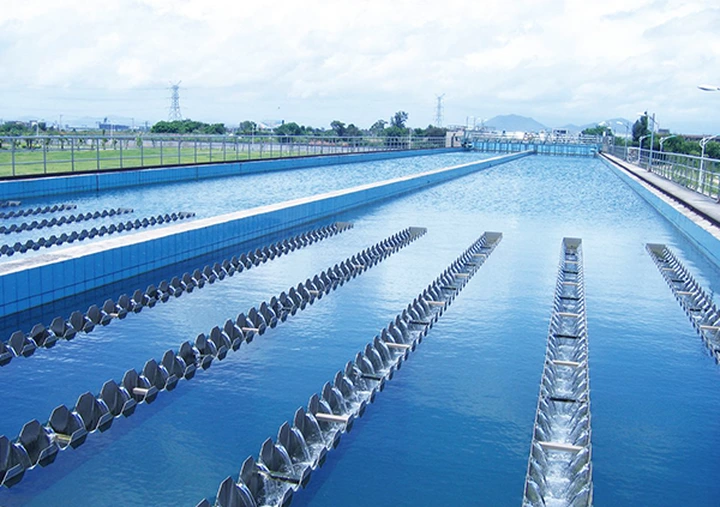
Water quality sensors play a crucial role in ensuring the health of our ecosystems and the safety of our drinking water. As the demand for clean water increases, the deployment of advanced water quality analyzers and sensors has become essential for monitoring parameters such as dissolved oxygen, pH levels, and other important indicators. These devices help detect contamination and provide real-time data that can inform decision-making processes in water management, agriculture, and environmental protection.
However, the implementation of water quality sensors is not without its challenges. Factors such as environmental conditions, data accuracy, and maintenance requirements can significantly impact the effectiveness of these instruments. Companies like BOQU Instrument, which specializes in the development and production of water quality meters and related technologies, are at the forefront of addressing these issues. By focusing exclusively on water quality sensors and analyzers, they strive to overcome deployment challenges and enhance the reliability of water monitoring systems worldwide.
Introduction to Water Quality Sensors
Water quality sensors play a crucial role in monitoring and ensuring the health of aquatic ecosystems. These devices measure various parameters, such as pH, dissolved oxygen, turbidity, and the presence of contaminants, providing vital data that helps in assessing water conditions. Accurate measurements from these sensors are essential for industries, municipalities, and environmental agencies striving to meet regulatory standards and safeguard public health.
The demand for reliable water quality monitoring has led to advancements in sensor technology. BOQU Instrument, focusing on the development and production of water quality analyzers and sensors, has emerged as a key player in this field. Their products include water quality meters and specialized instruments like dissolved oxygen meters and pH sensors, which are designed to deliver precise and timely data for diverse applications, ranging from aquaculture to wastewater treatment.
As the awareness of water quality issues grows globally, the deployment of these sensors becomes increasingly important. They not only assist in environmental protection efforts but also contribute to sustainable water management. Continuous innovation and refinement in the design and functionality of water quality sensors are vital in addressing the challenges faced in various deployment scenarios, ensuring that they perform reliably in diverse environmental conditions.
Common Challenges in Deployment
Deploying water quality sensors presents several challenges that can hinder effective monitoring. One significant issue is the environmental conditions in which these sensors must operate. Factors such as temperature fluctuations, humidity, and potential exposure to contaminants can affect sensor performance and accuracy. This makes it essential to design sensors that can withstand harsh conditions and still provide reliable data.
Another challenge is the need for regular maintenance and calibration of the sensors. Over time, sensors can drift from their original calibration due to environmental influences or wear and tear. This necessitates a well-planned maintenance schedule, which can be resource-intensive, particularly in remote or hard-to-access locations. Ensuring that all deployed sensors remain calibrated and functioning optimally is crucial for maintaining the integrity of the data collected.
Finally, data transmission and accessibility pose challenges in sensor deployment. Many water quality sensors are deployed in locations where connectivity to communication networks is limited. This can complicate real-time data sharing and monitoring efforts, leading to delays in reacting to water quality issues. Developing solutions that enable reliable data transmission even in remote areas is essential for enhancing the effectiveness of water quality monitoring programs.
Innovative Solutions for Effective Deployment
Effective deployment of water quality sensors requires addressing logistical challenges, such as site accessibility and environmental conditions. One innovative solution is the use of autonomous drones equipped with water quality sensors. These drones can reach remote locations and gather data without the need for extensive human presence, thus reducing the time and cost associated with conventional monitoring. This technology allows for more frequent and comprehensive data collection across diverse environments. In light of the growing importance of water quality monitoring, many organizations are turning to innovative solutions, such as those offered at https://boquinstrument.com, to enhance their water quality sensors and analyzers.
In addition to drones, integrating IoT (Internet of Things) technology into water quality sensors enhances their functionality and data transmission capabilities. By enabling real-time data sharing through cloud platforms, operators can monitor water quality conditions from anywhere, providing immediate alerts for any anomalies. This connectivity facilitates prompt decision-making and fosters collaboration among stakeholders, including environmental agencies and local communities.
Finally, developing user-friendly interfaces and mobile applications for water quality monitoring can significantly improve user engagement and data interpretation. Providing visualizations and real-time feedback can empower users, ranging from researchers to municipal authorities, to act on the insights gleaned from the data. Simplifying the user experience not only encourages widespread adoption of these technologies but also enhances the overall effectiveness of water quality management efforts.
Case Studies of Sensor Applications
In the aquatic research field, water quality sensors have been pivotal in monitoring and preserving ecosystems. A notable case is the deployment of dissolved oxygen meters in freshwater lakes, which helps researchers track the health of aquatic life. By gathering real-time data on oxygen levels, scientists can take appropriate actions to mitigate issues such as hypoxia, ensuring the survival of fish and plant species vital to the lake’s ecosystem.
Another significant application is in municipal water treatment facilities, where pH sensors play a crucial role in maintaining safe drinking water standards. By consistently measuring the pH levels of water throughout the treatment process, facilities can promptly adjust chemical treatments to maintain optimal levels. This proactive approach not only protects public health but also enhances the efficiency of water treatment operations, reducing costs associated with water quality issues.
In agricultural settings, water quality analyzers have been essential in managing irrigation systems for crop production. By deploying various sensors to measure parameters such as turbidity and nutrient levels, farmers can optimize their water usage and reduce runoff. This data-driven approach allows for sustainable farming practices, ultimately improving crop yields and minimizing environmental impact, showcasing the transformative potential of water quality sensors in modern agriculture.
Future Trends in Water Quality Monitoring
As the need for reliable water quality monitoring continues to grow, the demand for advanced sensors and analyzers is set to increase. Future developments in this field will likely focus on enhancing the accuracy and sensitivity of measurements. Innovations in materials science may lead to the creation of sensors that can detect even trace levels of contaminants, providing critical data for environmental protection and public health. Companies like BOQU Instrument are positioned to drive these advancements, focusing on the ongoing development and production of specialized water quality instruments.
Another important trend is the integration of IoT technology into water quality monitoring systems. With the rise of smart cities and connected devices, water quality sensors will increasingly leverage real-time data transmission and cloud computing. This will enable continuous monitoring and immediate alerts to stakeholders, leading to faster response times in mitigating water quality issues. Such systems can greatly benefit industries, municipalities, and researchers by providing them with actionable insights based on real-time data analysis.
Lastly, there is a growing emphasis on sustainability and eco-friendliness in the design of water quality sensors. Manufacturers are exploring ways to create low-energy, recyclable devices that can operate efficiently in various environments. This trend aligns with global sustainability goals and reflects a commitment to producing instruments that are not only effective but also environmentally responsible. As BOQU Instrument continues to innovate in the realm of water quality analyzers, we can expect to see a shift towards more adaptable, sustainable solutions that meet the evolving needs of water management and conservation.
